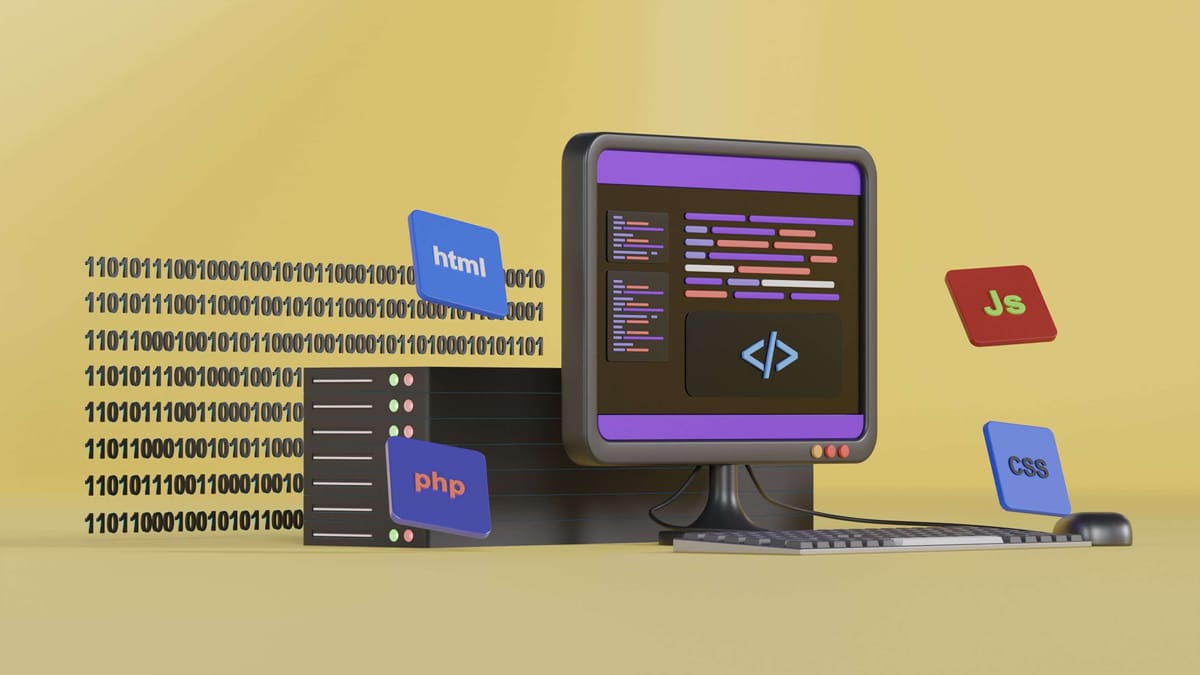Originally published here.
Welcome to the fast-paced world of business, where standing out is the key to success.
Ever wondered how some businesses become the talk of the town while others blend into the background?
That’s where competitive differentiation comes in – it's like finding the secret ingredient that makes your brand the main course in a buffet of options.
In this guide, we’re slicing through the ordinary to uncover the extraordinary ways you can make your business pop.
Get ready to discover the value of being distinct in the marketplace and how this article can be your treasure map to unearthing that unique sparkle.
Here’s to not just joining the race, but leading the pack with style!
What is competitive differentiation?
Competitive differentiation is the process of making your business stand out from its competitors.
It involves highlighting what makes your products or services unique. This could be a special feature, exceptional customer service, or an innovative approach to marketing.
It's all about creating a distinct identity in the market. When customers see your business, they recognize something different and valuable. This unique edge is what draws them to choose your offerings over others.
In a world where many businesses might look the same, competitive differentiation is your key to standing out, whether you're a budding entrepreneur looking to create an online business or an established company seeking to redefine its digital presence.
Understanding your market and competition
Understanding your market and competition is a bit like being a detective in your own business world. You start by diving deep into who your customers are. You get to know their needs, preferences, and pain points. Then, you turn your attention to your competitors.
Here's what you focus on:
- Analyzing their strengths and weaknesses.
- Observing their marketing strategies.
- Noting down what customers love and don't love about them.
- Monitoring their pricing structures and promotions.
- Keeping track of their product or service innovations.
- Watching their social media engagement and online presence.
- Studying their customer service approaches and reviews.
- Identifying gaps they are missing, which you could fill.
- Assessing their distribution channels and supply chain efficiency.
- Checking out partnerships or collaborations they are part of.
This isn't just a one-time task. It's an ongoing process. As you keep your finger on the pulse of the market, you adapt and evolve. By staying informed, you're not just keeping up; you're staying ahead.
This knowledge is your power to make smarter business decisions and carve out a unique space for your brand.

Best practices in mastering competitive differentiation
Mastering competitive differentiation is essential for standing out in today’s market. It's about strategically setting your business apart in a way that connects with your audience.
These aren't just tips; they're pivotal strategies to elevate your business and distinguish it from the competition. Let's dive into each area to see how they can revolutionize your approach and impact.
1. Define your unique selling proposition (USP)
Go beyond the surface to identify what truly sets your business apart. It's not only about the products or services you offer but also the unique ways in which you deliver them.
Your USP could be an exclusive product feature, an innovative customer service approach, or even a unique pricing strategy.
It's crucial that this USP is clear, compelling, and directly targets a specific need or desire of your audience. Think about what problems you solve that no one else does, and how you can communicate this in a way that resonates with your customers.
2. Leverage brand identity
Your brand is the narrative that wraps around your business, influencing how customers perceive and interact with you. It encompasses more than visual elements like colors and logos; it's about the feelings, values, and experiences associated with your company.
Your tone of voice could create a strong brand identity that connects on an emotional level with your audience, reflecting their values and aspirations. Consistency is crucial here – ensure that your brand's voice, tone, and visual representation are harmonious across all platforms, from your website and social media to customer service interactions.
3. Innovate as a differentiator
In a rapidly evolving business landscape, innovation is your ticket to staying relevant and ahead of the curve. It could manifest as a novel product development, a unique service delivery model, or even a creative marketing strategy that breaks the norm.
Foster an environment that encourages creative thinking and experimentation within your team. Stay informed about new trends and technologies in your industry and be ready to adapt and integrate them into your business practices.
Innovation isn’t just about big changes; sometimes, even small, incremental innovations can have a significant impact.
4. Provide quality and customer service
The quality of your offerings should be the cornerstone of your business – it's what your reputation will be built on. High-quality products or services are expected, but how you deliver them can make a huge difference.
This extends to customer service; every interaction should reinforce the high standards of your brand. Train your team to go above and beyond in addressing customer needs, ensuring that each experience is positive and memorable.
A commitment to quality and exceptional service can transform one-time buyers into loyal, lifelong customers.
5. Utilize technology for a competitive edge
Embracing technology can significantly enhance your business's efficiency and appeal. Utilize tools like CRM (customer relationship management) systems to better understand and manage customer relationships. Implement AI and machine learning for personalized marketing and predictive analytics.
Data analytics can offer deep insights into customer behavior, helping tailor your strategies more effectively. Technology also plays a key role in automating routine tasks, freeing up time for your team to focus on innovation and growth.
Whether it's through advanced e-commerce platforms, mobile apps, or cloud computing, technology enables you to provide a more seamless, responsive service to your customers.

6. Build strong customer relationships
The journey with your customers doesn't stop after a purchase. It's about building a lasting connection. Take time to understand their ongoing needs and expectations. Regularly seek their feedback and show that you value their opinions.
Implement loyalty programs, personalized communication, and tailored offers to make them feel special. Remember, a satisfied customer is more likely to return and refer others to your business.
Investing in these relationships not only builds a loyal customer base but also turns your customers into advocates for your brand.
7. Implement strategic partnerships and collaborations
Strategic partnerships and collaborations can be a powerful way to expand your business's reach and capabilities. Look for companies with complementary skills or offerings.
This could involve co-marketing efforts, joint ventures, or even sharing resources to tackle larger projects. Partnerships can also help you enter new markets or segments more easily, leveraging the established presence of your partners.
These collaborations should be mutually beneficial, bringing new insights, audiences, and opportunities to both parties. They can also provide a platform for innovation, combining different strengths and perspectives to create something truly unique.
8. Measure and adapt your strategies
In the fast-paced business world, staying flexible and adaptable is crucial. Use data analytics to guide your decisions, monitoring key metrics like customer acquisition costs, engagement rates, and retention levels.
Regularly review and analyze your strategies to understand what's working and what isn't. Use insights like market trends and customer feedback to improve your products and refine your approach.
Remember, what worked yesterday might not work tomorrow, so be prepared to pivot and innovate. This agility allows you to stay relevant and competitive, even as the market evolves.
Top strategies to gain competitive differentiation
Gaining a competitive edge requires smart and distinct strategies. Let's look at some fresh ways to make your business stand out:
Foster thought leadership
Establishing yourself as a thought leader in your industry goes a long way in differentiating your brand. Share your expertise and insights through various channels like blogs, webinars, and public speaking events.
Thought leadership builds credibility and trust, positioning your business as an authority. Regularly contribute to industry discussions, publish insightful articles, and participate in panels or conferences. This not only boosts your brand's visibility but also demonstrates a deep understanding of your field.
Implement cutting-edge design
In a world where first impressions count, cutting-edge design can set your products or services apart. Invest in innovative design that not only looks good but also enhances functionality.
This includes everything from your website navigation and product packaging to the user interface of your digital products. Aesthetically pleasing and intuitive design not only attracts attention but can also improve the user experience, making your brand memorable and preferred by customers.

Harness the power of storytelling
Storytelling is a powerful tool in creating an emotional connection with your audience. Craft stories that resonate with your customers' experiences and aspirations.
Use narratives in your marketing that tell the story of your brand, the journey of your products, or the experiences of your customers. Effective storytelling can turn your brand into a relatable entity that customers feel connected to, elevating your business above mere transactions.
Engage in community involvement
Actively participating in your local community can significantly enhance your brand's image. Support local events, sponsor community projects, or engage in charitable work.
This not only demonstrates your commitment to social responsibility but also helps in building a positive reputation. Community involvement brings your brand closer to the public, creating a sense of goodwill and fostering stronger connections with your customer base.
Cultivate a unique company culture
Your company culture is a reflection of your brand's values and beliefs. Cultivating a unique culture that aligns with your brand can attract like-minded employees and customers.
Encourage practices that foster innovation, inclusivity, and employee well-being. A strong and positive company culture not only improves team-building activities, employee satisfaction, and retention but also appeals to customers who value businesses with a strong ethical foundation.
Dominate social media engagement
Social media offers a direct line to interact with your audience. To dominate this space, create content that is not only engaging but also aligns with your brand's voice and values. Utilize different platforms to reach diverse audience segments, and be responsive to comments and messages.
Additionally, connect with your existing audience on a deeper level on channels like LinkedIn by finding their emails through a LinkedIn email finder and sending them personalized emails.
Innovative campaigns, consistent engagement, and authentic content can help in building a strong online community around your brand. This active presence not only boosts brand awareness but also drives customer loyalty.
Important tools to use
In the journey to make your business shine, having the right tools in your toolbox is a game-changer. You need gadgets and gizmos that do the heavy lifting for you, making your path to success smoother. Here's a rundown of some crucial tools to consider:
- SEO and analytics tools: Tools like Google Analytics and SEMrush are essential for any digital marketer. They give you a window into how your website is performing and what your audience is doing.
Track everything from page views and bounce rates to keyword rankings and user demographics. This data is invaluable for optimizing your website and tailoring your marketing strategies to better engage your audience. - CRM software: CRM systems such as Salesforce or HubSpot are pivotal in managing customer interactions and data. They help you keep a detailed record of customer conversations, preferences, and history.
This information allows you to personalize customer experiences, predict future needs, and maintain strong relationships, ultimately leading to increased customer loyalty and sales. - Social media management tools: Managing various social media platforms can be overwhelming. Tools like Hootsuite or Buffer simplify this task by allowing you to schedule posts, track engagement, and analyze your social media performance across different channels.
These platforms help you maintain a consistent presence on social media, engage effectively with your audience, and measure the impact of your campaigns. - Email marketing software: Email remains a powerful tool for connecting with customers. There are several free email outreach tools that enable you to design, send, and track email campaigns.
With features like email personalization, segmentation, and analytics, these tools help you deliver targeted content to different segments of your audience, nurturing leads and keeping customers engaged with your brand. - Project management software: For teams juggling multiple projects, tools like Asana or Trello are lifesavers. They help organize tasks, deadlines, and collaborations, ensuring that everything stays on track.
These tools are great for maintaining visibility over project progress, delegating tasks efficiently, and ensuring that your team stays aligned and productive. - Content management systems (CMS): CMS systems like WordPress or Joomla are key for managing your website’s content. They offer a user-friendly platform to create, edit, and publish digital content without needing extensive technical knowledge.
This flexibility allows you to keep your website updated with ease, ensuring that your content remains fresh and relevant. - Graphic design tools: In a visually-driven market, tools like Canva, Visme, or Adobe Creative Suite are invaluable for creating eye-catching marketing materials.

These tools offer a range of features to create everything from social media graphics to brochures and banners, helping you communicate your brand’s message visually and professionally.
Think of these tools as your behind-the-scenes crew, working tirelessly to make sure your business is running like a well-oiled machine. With them, you can focus more on the creative and strategic aspects of your business, while they handle the nitty-gritty details.
Key takeaways in mastering competitive differentiation
Standing out in today’s competitive market is all about nailing your USP, building a resonant brand identity, and consistently delivering innovation and quality.
It’s not just the products or services that count, but the memorable experiences you create through strong customer relationships, community involvement, and the unique culture within your team.
Storytelling is your secret weapon to make your brand relatable and engaging. And let's not forget that the right set of tools – from analytics to CRM and social media management – are crucial in keeping everything running smoothly.
Remember, competitive differentiation is a continuous journey of showcasing what makes your business special and authentically connecting with your audience. Keep these core ideas in mind, and you'll carve a distinct place for your brand in the market.
Join our growing community of developer marketers and developers, and stay on top of the latest trends, connect with your peers, and so much more.




